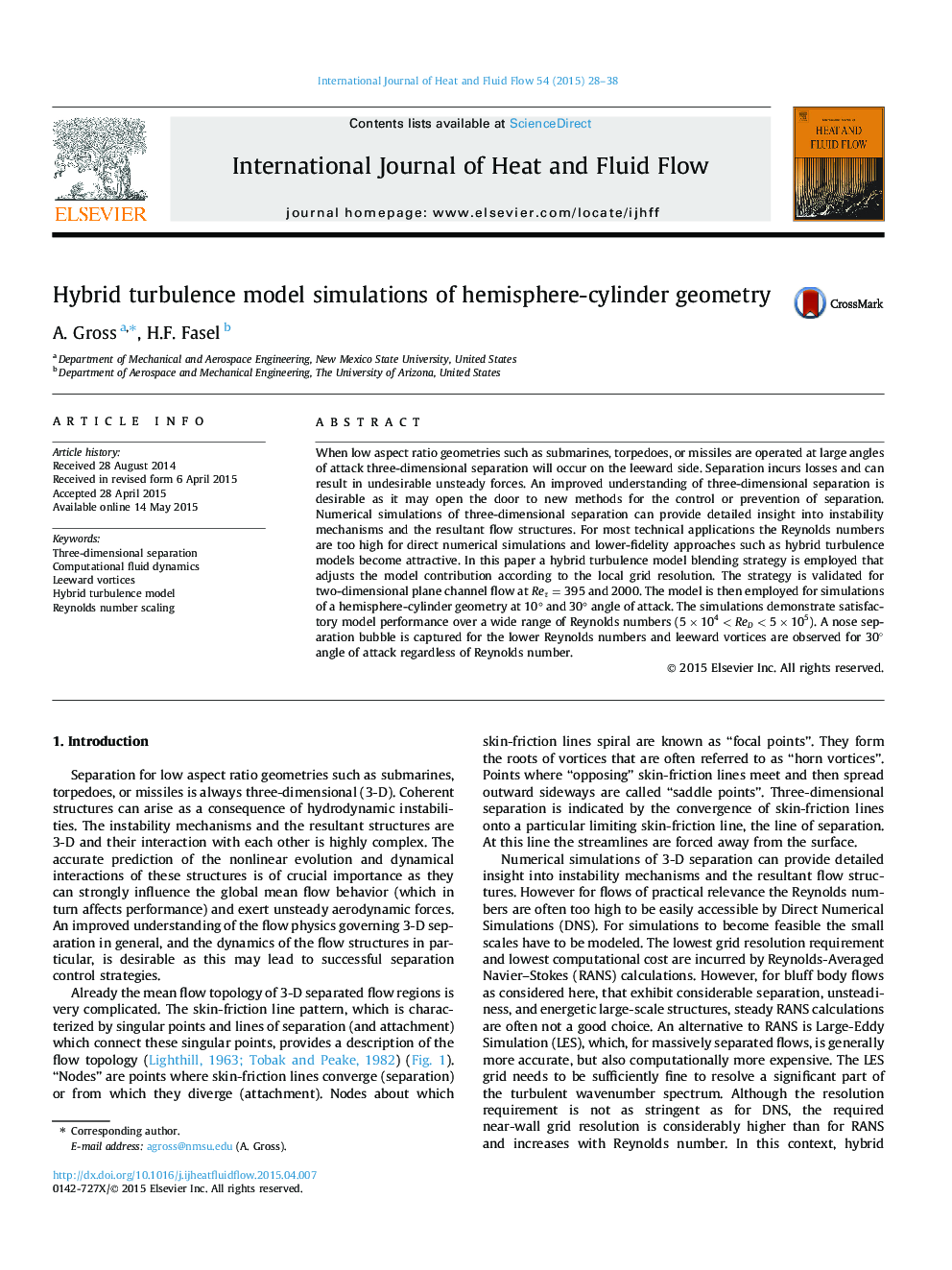| Article ID | Journal | Published Year | Pages | File Type |
|---|---|---|---|---|
| 655027 | International Journal of Heat and Fluid Flow | 2015 | 11 Pages |
Abstract
When low aspect ratio geometries such as submarines, torpedoes, or missiles are operated at large angles of attack three-dimensional separation will occur on the leeward side. Separation incurs losses and can result in undesirable unsteady forces. An improved understanding of three-dimensional separation is desirable as it may open the door to new methods for the control or prevention of separation. Numerical simulations of three-dimensional separation can provide detailed insight into instability mechanisms and the resultant flow structures. For most technical applications the Reynolds numbers are too high for direct numerical simulations and lower-fidelity approaches such as hybrid turbulence models become attractive. In this paper a hybrid turbulence model blending strategy is employed that adjusts the model contribution according to the local grid resolution. The strategy is validated for two-dimensional plane channel flow at ReÏ=395 and 2000. The model is then employed for simulations of a hemisphere-cylinder geometry at 10° and 30° angle of attack. The simulations demonstrate satisfactory model performance over a wide range of Reynolds numbers (5Ã104
Related Topics
Physical Sciences and Engineering
Chemical Engineering
Fluid Flow and Transfer Processes
Authors
A. Gross, H.F. Fasel,
